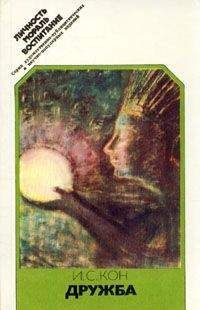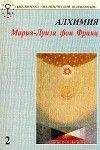Эллиот Аронсон - Общественное животное. Введение в социальную психологию
Скачивание начинается... Если скачивание не началось автоматически, пожалуйста нажмите на эту ссылку.
Жалоба
Напишите нам, и мы в срочном порядке примем меры.
Описание книги "Общественное животное. Введение в социальную психологию"
Описание и краткое содержание "Общественное животное. Введение в социальную психологию" читать бесплатно онлайн.
11. Kenrick, D. Т., amp; Guttieres, S.E. (1980). Contrast effects in judgements of attractiveness: When beauty becomes a social probern. Journal of Personality and Social Psychology, 38,131-140.
12. Higgins, E.T., Rholes, W.S., amp; Jones, C.R. (1977). Category accessibility and impression formation. Journal of Experimental Social Psychology, 13, 141-154.
13. Heath, L., Acklin, M., amp; Wiley, K. (1991). Cognitive heuristics and AIDS risk assessment among physicians. Personality and Social Psychology Bulletin, 21, 1859- 1867.
14. Rogers, E.M., amp; Dearing, J. W. (1988), Agenda-setting research: Where has it been, Where is it going? In J.A. Anderson (Ed.), Communication Yearbook II (pp.
555-594). Beverly Hills, CA: Sage Publications.
15. McCombs, M.E., amp; Shaw, D.L. (1972). The agenda-setting function of mass media. Public Opinion Quarterly, 36, 176-187.
16. lyengar, S., amp; Kinder, D.R. (1987). News that matters. Chicago, IL: University of Chicago Press.
17. Цит. по: Rogers and Dearing, Agenda-setting research.
18. Kahneman, D., amp; Tversky, A. (1984). Choices, values, and frames. American Psychologist, 39,341-350.
19. Gonzales, M.H.,Aronson, E., amp; Costan^o, M. (1988). Increasing the effectiveness of energy auditors: A field experiment. Journal of Applied Social Psychology, 18, 1046- 1066.
20. Meyerowitz, В.E., amp; Chaiken, S. (1987). The effect of message framing on breast self-examination attitudes, intentions, and behavior. Journal of Personality and Social Psychology, 52,500-510.
21. Asch, S. (1946). Forming impressions of personality. Journal of Abnormal and Social Psychology, 41,258-290.
22. Jones, E.E., Rock, L., Shaver, K.G., Goethals, G.R., amp; Ward, L.M. (1968). Pattern of performance and ability attribution: An unexpected primacy effect. Journal of Personality and Social Psychology, 10, 317-340.
23. Aronson, J.M., amp; Jones, E.E. (1992). Inferring abilities after influencing performance. Journal of Experimental Social Psychology, 28, 277-299.
24. Zukier, ff. (1982). The dilution effect: The role of the correlation and dispersion of predictor variables in the use of nondiagnostic information. Journal of Personality and Social Psychology, 43,1163-1174.
25. Nisbett, R., amp; Ross, L. (1980). Human inference: Strategies and shortcomings of social judgement. Englewood Cliffs, NJ: Prentice-Hall. Sherman, S.J., amp; Corty, E. (1984). Cognitive heuristics. In R.S.Wyer amp; T.K.Srull (Eds.), Handbook of Social Cognition (Vol. I, pp. 189-286), Hilisdale, NJ: Eribaum. Tversky, A., amp; Kahneman, D. (1974). Judgement under uncertainty: Heuristics and biases. Science, 185, 1124-1131.
26. ‹Which cereal for breakfast?› Consumer Reports, February 1981, pp. 68-75.
27. Сравнение основано на: ‹Eating to lower your blood cholesterol›. U.S. Department of Health and Human Services, NIH Publication No. 87-2920, September 1987. Было показано, что насыщенные жирные кислоты - те, что содержатся в мясе животных и отдельных видах растительных жиров (в кокосовом, шоколадном, пальмовом и во всех гидрированных маслах), повышают уровень холестерола. Изготовители хлопьев иногда используют подобные жиры в своих продуктах - особенно кокосовое, пальмовое и гидрированные масла. Чтобы исключить их, многие производители хлопьев в настоящее время заняты изменением состава своих продуктов - так что, перед тем как принять окончательное решение, какой именно сорт покупать, внимательно ознакомьтесь с тем, что написано на коробке.
28. Nisbett amp; Ross (1980); Shweder, R. (1977). Likeness and likelihood in everyday thought: Magical thinking in judgments about personality. Current Anthropology, 18, 637-658.
29. Pratkanis, A.R. (1989). The cognitive representation of attitudes. In A.R. Pratkanis, S.J. Bleckler, amp; A.G. Greenwald (Eds.), Attitude structure and function (pp. 71-98). Hilisdale, NJ: Eribaum. Pratkanis, A.R., amp; Greenwald, A.G. (1989). A socio-cognitive model of attitude structure and function. In L. Berkowitz (Ed.), Advances in experimental social psychology (Vol. 22, pp. 245-285). New York: Academic Press.
30. Pratkanis, A.R. (1988). The attitude heuristic and selective fact identification. British Journal of Social Psychology, 27, 257-263.
31. Thistlewaite, D. (1950). Attitude and structure as factors in the distortion of reasoning. Journal of Abnormal and Social Psychology, 45, 442-458.
32. Ross, L., Greene, D., amp; House, P. (1977). The ‹false-consensus› effect: An egocentric bias in social perception and attribution process. Journal of Experimental Soda! Psychology, 13,279-301.
33. Pratkanis, Cognitive representation.
34. О лабораторной демонстрации - см.: Gilovich, Т. (1981). Seeing the past in the present: The effect of associations to familiar judgments and decisions. Journal of Personality and Social Psychology, 40, 797-808.
35. Darley, J.M., amp; Gross, P.ff. (1983). A hypothesis-confirming bias in labeling effects. Journal of Personality and Social Psychology, 44, 20-33.
36. Hamilton, D.L., amp; Ross, T.L. (1980). Illusory correlation and the maintenance ofstereotypic beliefs. Journal of Personality and Social Psychology, 39, 832-845.
37. Pratkanis, A.R. Личное сообщение.
38. Chapman, L.J. (1967). Illusory correlation in observational report. Journal of Verbal Learning and Verbal Behavior, 6, 151-155. Chapman, L.J., amp; Chapman, J.P. (1967). Genesis of popular but erroneous psychodiagnostic observations. Journal of Abnormal Psychology, 72, 193-204. Chapman, L.J., amp; Chapman, J.P. (1969). Illusory correlation as an obstacle to the use of valid psychodiagnostic signs. Journal of Abnormal Psychology, 74,271-280.
39. Park, В., amp; Rothbart, M. (1982). Perception of out-group homogeneity and levels of social categorization: Memory for the subordinate attributes of in-group and out-group members. Journal of Personality and Social Psychology, 42, 1051-1068.
40. Обзоры и дискуссию - см.: Tajfel, Н. (1981). Human groups and social categories. Cambridge: Cambridge University Press. Turner, J.C. (1987), Rediscovering the social group. New York: Basil Blackwell.
41. Loflus, E.F., amp; Loftus, G.R. (1980). On the permanence of stored information in the human brain. American Psychologist, 35, 409-420.
42. Loftus, E.F., amp; Ketchum, К. (1991). Witness forthe defense. New York: St.Martin's Press.
43. Loftus, E.F., amp; Palmer, J.C. (1974). Reconstruction ofautomobile destruction: An example of the interaction between language and memory. Journal of Verbal Learning and Verbal Behavior, 13, 585-589.
44. Loftus, E.F. (1977). Shifting human color memory. Memory and Cognition, 5, 696-699.
45. Loftus, E.F. (1993). The reality of repressed memories. American Psychologist, 48, 518-537.
46. Ross, M., McFarland, С., amp; Fletcher, G.O.J. (1981). The effect of attitude on the recall of personal history. Journal of Personality and Social Psychology, 40, 627-634.
47. Gibbs, G. (1981). Teaching students to learn. Milton Keynes, England: Open University Press.
48. Pratkanis, A.R., Eskenaw, J., amp; Greenwald, A. G. (1990). What you expect is what you believe (but not necessarily what you get): On the effectiveness of subliminal self-help audiotapes.Unpublished manuscript.University of Santa Cruz. Greenwald, A.G., Spangenberg, E.R., Pratkanis, A.R., amp; Eskena^i, J. (1991). Double-blind tests of subliminal self-help audiotapes. Psychological Science, 12, 119-122.
49. Conway, M., amp; Ross, M. (1984). Getting what you want by revising what you had. JoumalofPersonality andSocial Psychology, 47, 738-748.
50. Wyatt, D.F., amp; Campbell, D. T. (1951). On the liability of stereotype or hypothesis. Journal of Abnormal and Social Psychology, 46, 496-500. Bruner, J.S., amp; Potter, M.C. (1964). Science, 144, 424-425.
51. Snyder, M., amp; Swann, W.B. (1978). Hypothesis-testing processes in social interaction. Journal of Personality and Social Psychology, 36, 1202-1212.
52. Fischhoff, В. (1975). Hindsight does not equal foresight: The effect of outcome knowledge on judgment under uncertainty. Journal of Experimental Psychology: Human Perception and Performance, 1, 288-299. Fischhoff, В. (1977). Perceived informativeness offacts. Journal of Experimental Psychology: Human Perception and Performance, 3,349-358.
53. Greenwald, A.G. (1980). The totalitarian ego: Fabrication and revision of personal history. American Psychologist, 35, 603-618.
54. LaPier, R. (1934). Attitudes versus actions. Social Forces, 13, 230-237.
55. Wicker, A. (1969). Attitudes versus actions: The relationship of verbal and overt behavioral responses to attitude objects. Journal of Social Issues, 25 (4), 41-78.
56. Jones, E.E. (1990). Interpersonal perception. New York: W.H. Freeman. Jones, E.E., amp; Davis, K.E. (1965). From acts to dispositions: The attribution process in person perception. In L. Berkowitz (Ed.), Advances in Experimental Social Psychology (Vol. 2, pp. 219-266). New York: Academic Press.
57. Jones, E.E., amp; Harris, V.A. (1967). The attribution of attitudes. Journal of Experimental Social Psychology, 3, 1-24.
58. Favo, R.H. (1986). How do attitudes guide behavior? In R.M. Sorrentino amp; E.T. Higgins (Eds.), Handbook of motivation and cognition (pp. 204-242). New York: Guilford Press. Fa^io, R.H. (1989). On the power and functionality of attitudes: The role of attitude accessibility. In A.R. Pratkanis, S.J. Breckler, amp;A.G. Greenwald (Eds.), Attitude structure and function (pp. 153-179). Hilisdale, NJ: Eribaum.
59. Fazio, R.H., amp; Williams, C.J. (1986). Attitude accessibility as a moderator of the attitude-perception and attitude-behavior relations: An investigation of the 1984 presidential elections. JoumalofPersonality and Social Psychology, 51, 505-514.
60. Fazio, R.H., Chen, J., McDonel, E.G., amp; Sherman, S.J. (1982). Attitude accessibility, attitude-behavior consistency, and the strength of the object-evaluation association. Journal of Experimental Social Psychology, 50, 339-357. Fa^io, R.H., Powell, M.C., amp; 456 Herr, P.M. (1983). Toward a process model of attitude-behavior relation: Accesing one's attitude upon mere observation of the attitude object. Journal of Personality and Social Psychology, 44, 723-735. Favo, R.H., amp; Zanna, M. P. (1981). Direct experience and attitude-behavior consistency. In L. Berkowitz (Ed.), Advances in Experimental Social Psychology (Vol. 14, pp. 162-202). New York: Academic Press. Regan, D.T., amp; Fa^io, R.H. (1977). On the consistency between attitudes and behavior: Look to the method of attitude formation. Journal of Experimental Social Psychology, 13,38-45.
61. Herr, P.M. (1986). Consequences of priming: Judgment and behavior. Journal of Personality and Social Psychology, 51, 1106-1115.
62. Ross, L. (1977). The intuitive psychologist and his shortcomings: Distortion in the attribution process. In L. Berkowitz (Ed.), Advances in Experimental Social Psychology (Vol. 10, pp. 173-220). New York: Academic Press.
63. Bierbrauer, G. (1973). Effect of set, perspective, and temporal factors in attribution. Unpublished Ph.D. dissertation, Stanford University. Цит. по: Ross (1977).
64. Ross, L., Amabile, T.M., amp; Steinmet^, J.L. (1977). Social roles, social control, and biases in social-perception processes. Journal of Personality and Social Psychology, 35, 485-494.
65. Ответы: стадион ‹Форбс› в Питтсбурге, Вильнюс и 4 июля 1826 года.
66. Jones, Е.Е., amp; Nisbett, R.E. (1971). The actor and the observer: Divergent perceptions of the causes of behavior. In Е.Е. Jones, D.E. Kanouse, H.H. Kelley, R.E. Nisbett, S. Valins, amp; B. Weiner (Eds.), Attribution: Perceiving the causes of behavior (pp. 79-94). Morristown, NJ: General Learning Press.
67. CM: Jones, Е.Е., Rock, L., Shaver, K.G., Goethals, G. R., amp; Ward, L.M. (1968). Pattern of performance and ability attribution: An unexpected primacy effect. Journal of Personality and Social Psychology, 10, 317-349. McArthur, L. (1972). The how and what of why: Some determinants and consequences of causal attribution. Journal of Personality and Social Psychology, 22, 171-193. Nisbett, R.E., Caputo, C., Legant, P., amp; Marecek, J. (1973). Behavior as seen by the actor and as seen by the observer. Journal of Personality and Social Psychology, 27, 154-164.
68. Storms, M.D. (1973). Videotape and the attribution process: Reversing the perspective of actors and observers. Journal of Personality and Social Psychology, 27, 165-175.
69. James, W. (1890/1950). The principles of psychology (pp. 314-315). New York: Dover.
70. Greenwald, A.G. (1980). The totalitarian ego: Fabrication and revision of personal history. American Psychologist, 35, 603-618. Greenwald, A.G., amp; Pratkanis, A.R. (1984). The self. In R.S. Wyer amp; Т.К. Srull (Eds.), Handbook of Social Cognition (Vol. 3, pp. 129-178). Hilisdale, NJ: Eribaum.
71. Greenwald, The totalitarian ego.
Подписывайтесь на наши страницы в социальных сетях.
Будьте в курсе последних книжных новинок, комментируйте, обсуждайте. Мы ждём Вас!
Похожие книги на "Общественное животное. Введение в социальную психологию"
Книги похожие на "Общественное животное. Введение в социальную психологию" читать онлайн или скачать бесплатно полные версии.
Мы рекомендуем Вам зарегистрироваться либо войти на сайт под своим именем.
Отзывы о "Эллиот Аронсон - Общественное животное. Введение в социальную психологию"
Отзывы читателей о книге "Общественное животное. Введение в социальную психологию", комментарии и мнения людей о произведении.













